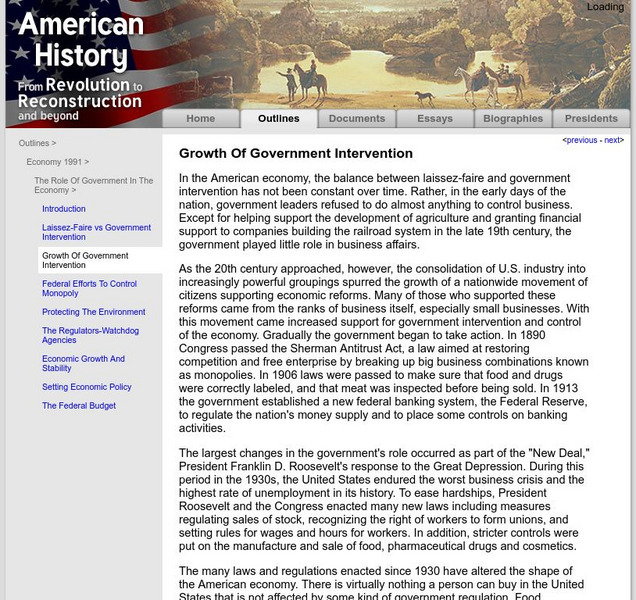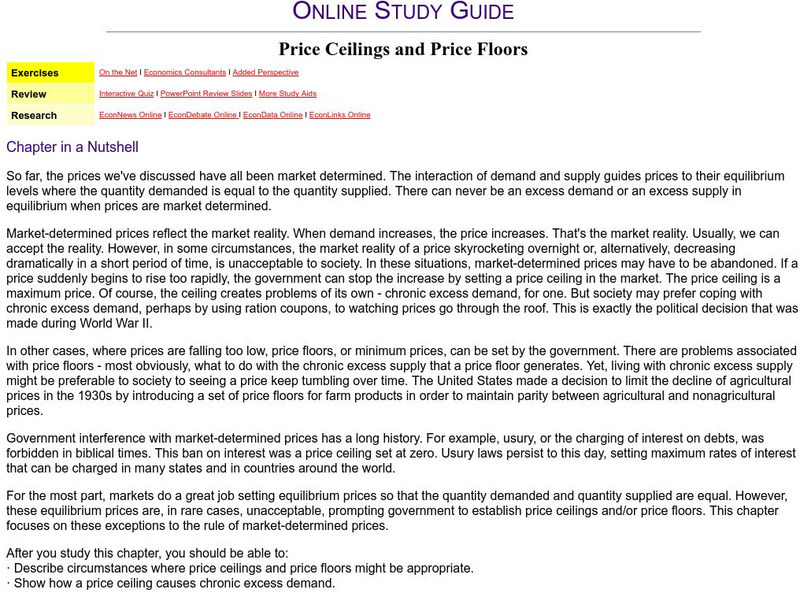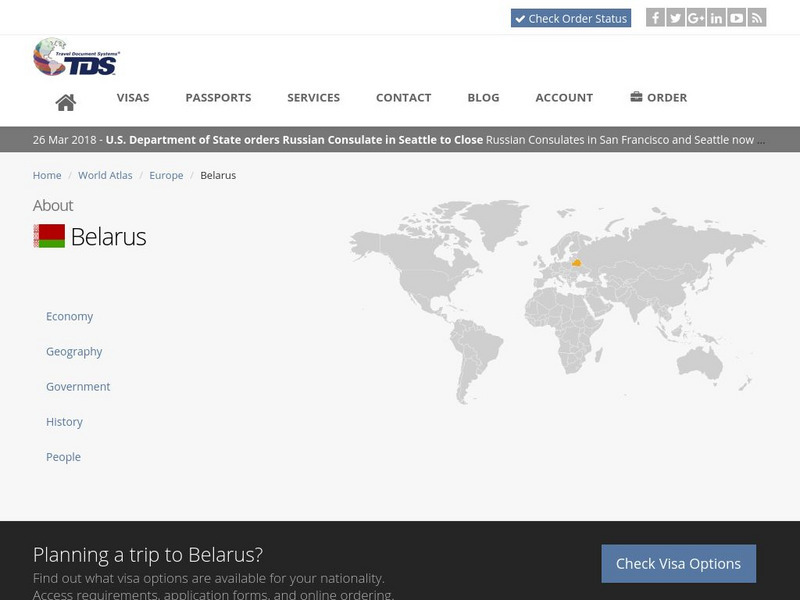Library of Economics and Liberty
Concise Encyclopedia of Economics: Public Goods
This article describes the relationship between externalities, private and public goods, and government intervention.
University of Groningen
American History: Outlines: Government in the Economy
This resource shows the different roles that the government plays in relation to the economy. It talks about the federal budget, the different responsibilities the government has, federal efforts to control monopolies, government...
University of Groningen
American History: Outlines: Growth of Government Intervention
Overview of the changing federal government role as it increased involvement and intervention in business and social welfare in the 1900s.
Wikimedia
Wikipedia: Price Ceiling
Provides a thorough description of a price ceiling, along with graphs to explain this concept.
Other
South Western Learning: Econ News: Price Ceilings and Price Floors
Offers a summary of when government intervention and market-determined prices are necessary to stabilize the economy. Includes an interactive quiz at the end.
Other
Private Provisions of Public Goods: Issues and Examples [Pdf]
This essay examines public goods and their provision by the government. The argument uses lighthouses and warships from historical contexts as examples. For the advanced economics student.
Travel Document Systems
Tds: Belarus: Economy
Read about the current state of the economy of Belarus, its strengths and weaknesses. Information is from the U.S. State Dept. Background Notes.
Khan Academy
Khan Academy: The Phillips Curve in the Keynesian Perspective
Read about how we can use the Keynesian perspective to think about the common tradeoff between low inflation and low unemployment.
Khan Academy
Khan Academy: The Keynesian Perspective on Market Forces
They Keynesian economic perspective argues for government intervention in certain cases, but market forces are still valuable.
Khan Academy
Khan Academy: The Effects of Govt Intervention in Different Market Structures
Practice what you've learned about options available to regulate markets where the socially optimal quantity is not produced.










